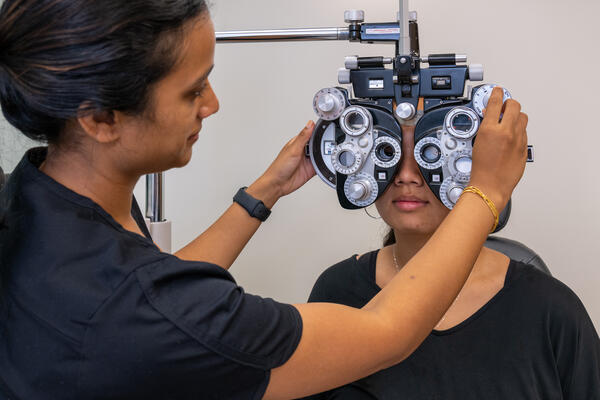The Benefits And Drawbacks of Different Refractive Surgeries for Enhanced Eyecare

LASIK Surgical Treatment
LASIK surgical procedure is a generally carried out refractive procedure that aims to remedy vision concerns such as nearsightedness, farsightedness, and astigmatism. This medical technique has actually gained popularity as a result of its efficiency in giving patients with clearer vision and reducing their dependence on glasses or contact lenses. During the treatment, a slim flap is produced on the cornea, and a laser is utilized to improve the underlying cells, correcting the refractive mistake. The flap is after that repositioned, enabling fast recovery and very little discomfort for the individual.
One of the primary advantages of LASIK surgical procedure is the quick renovation in vision experienced by lots of people. Most individuals discover a considerable improvement in their sight soon after the procedure, with minimal downtime needed for healing. Additionally, LASIK is recognized for its high success price and reduced occurrence of complications when executed by experienced cosmetic surgeons. However, like any type of surgery, LASIK also carries some threats, including completely dry eyes, glare, halos, and under or overcorrection of vision. It is vital for individuals considering LASIK surgery to undergo an extensive analysis by an eye care specialist to figure out if they are ideal candidates for the treatment.
PRK Procedure
The PRK procedure, likewise called Photorefractive Keratectomy, is a kind of refractive surgical procedure that aims to correct vision problems similar to LASIK surgical treatment. Unlike LASIK, which entails creating a flap in the cornea, PRK deals with the surface area layer of the cornea. During the PRK treatment, the outer layer of the cornea, called the epithelium, is removed to enable reshaping of the underlying corneal tissue with an excimer laser. This improving helps to correct refractive mistakes such as astigmatism, farsightedness, and nearsightedness.
Among the advantages of PRK over LASIK is that it gets rid of the danger of flap-related issues given that no flap is produced throughout the surgical procedure. This can be useful for people with slim corneas or those involved in call sports where eye trauma is a possibility. The recovery time for PRK is typically longer compared to LASIK, as the external layer of the cornea needs time to restore after the treatment. Despite the longer healing period, PRK can be a suitable alternative for individuals looking for vision correction surgery.
SMILE Surgical Procedure
A cutting-edge refractive surgical procedure method obtaining popularity in the field of ophthalmology is SMILE Surgical procedure. Tiny Laceration Lenticule Removal (SMILE) is a minimally invasive treatment that remedies vision by improving the cornea utilizing a femtosecond laser. Unlike traditional LASIK surgery, SMILE Surgical procedure entails producing a tiny cut in the cornea to extract a lenticule, which leads to much less interruption to the corneal structure and possibly quicker recuperation times.
One of the key advantages of SMILE Surgical procedure is its ability to deal with nearsightedness (nearsightedness) and astigmatism with high accuracy, leading to excellent aesthetic end results for individuals. The minimally intrusive nature of the procedure additionally decreases the danger of complications such as completely dry eye disorder, making it a favorable alternative for individuals looking for refractive surgical procedure.

LASEK Technique
Having actually checked out the benefits and considerations of SMILE Surgical procedure, an additional notable refractive surgical procedure method worth taking a look at is the LASEK Method. LASEK, which stands for Laser-Assisted Subepithelial Keratectomy, is a kind of laser eye surgical treatment that aims to correct refractive mistakes such as myopia (nearsightedness), hyperopia (farsightedness), and astigmatism.
Unlike LASIK, LASEK does not involve creating a corneal flap. Instead, during a LASEK procedure, the cosmetic surgeon makes use of a watered down alcohol solution to loosen up the thin external layer of the cornea, known as the epithelium.
One of the key benefits of LASEK is that it can be ideal for people with slim corneas who might not be great candidates for LASIK. Furthermore, LASEK generally results in very little post-operative pain and a quicker recuperation time contrasted to PRK. The aesthetic recovery process with LASEK may be somewhat longer than with LASIK.
Implantable Call Lenses
Implantable Call Lenses offer a long-term vision modification option for people looking for an alternative to conventional call lenses or glasses. These lenses, additionally referred to as phakic intraocular lenses, are operatively placed right into the eye to deal with refractive mistakes such as nearsightedness (nearsightedness), hyperopia (farsightedness), and astigmatism. andalusia pediatrics. Unlike standard call lenses that remain on the surface area of the eye, implantable get in touch with lenses function within the eye itself, giving clear vision without the need for daily maintenance or elimination
Among the key advantages of implantable contact lenses is their durability. As soon as put, they can remain in the eye indefinitely, providing stable and consistent vision adjustment. Furthermore, these lenses can be an outstanding option for people that are not good click for source prospects for laser eye surgical procedure or who choose a reversible vision modification procedure.
However, implantable call lenses do bring some risks, including the capacity for cataracts or increased eye stress. It is essential for individuals considering this alternative to talk to an eye care specialist to establish if implantable get in touch with lenses are the best option for their details requirements and eye health.
Verdict
To conclude, each kind of refractive surgery has its very own advantages and negative aspects. LASIK surgery is prominent for its fast healing time, while PRK treatment might appropriate for clients with thin corneas. SMILE surgery offers minimal pain during the treatment, but LASEK strategy may have a longer recovery process. Implantable call lenses give a choice for those that are not suitable prospects for typical surgical treatments. Patients need to talk to their eye care provider to establish the most effective choice for their individual requirements.

Overall, SMILE Surgical procedure offers a promising alternative for people looking to boost their vision via refractive surgical treatment.